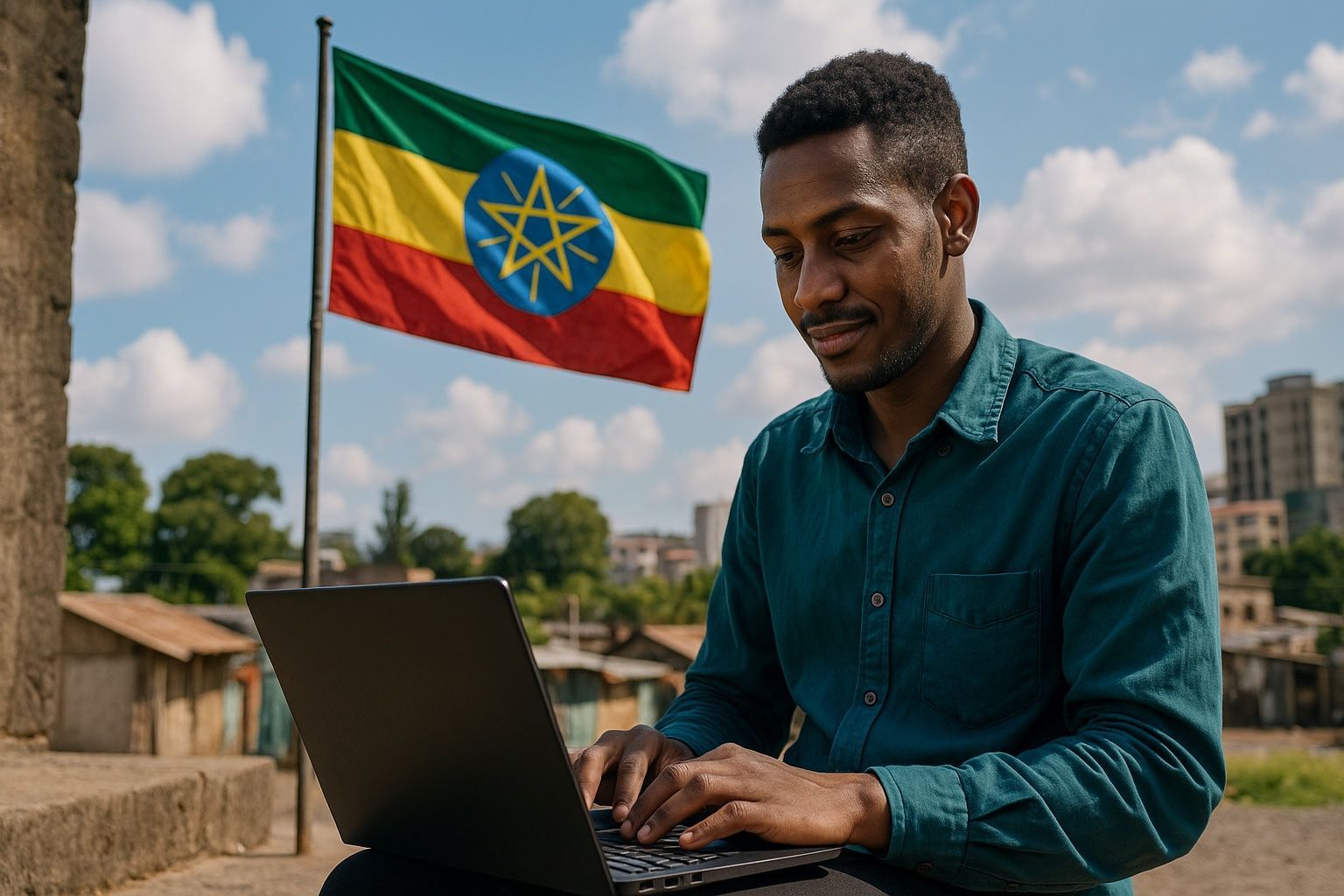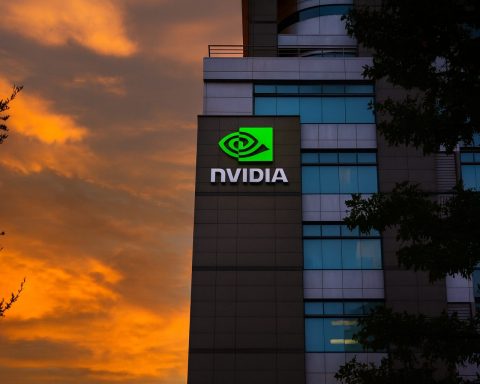- As of early 2025, about 28.6 million Ethiopians were internet users, roughly 21.3% of the population.
- Ethio Telecom owned about 23,000 km of fiber-optic cable across Ethiopia as of 2023, forming the national backbone and linking to neighboring undersea cables via Djibouti.
- In late 2024, Ethio Telecom signed a Horizon Fiber corridor deal with Djibouti Telecom and Sudatel to create a multi-terabit cross-border link between Ethiopia, Djibouti, and Sudan.
- Ethio Telecom launched commercial 5G in Addis Ababa in October 2022, with 145 sites active in the capital by September 2023 and expansion to additional cities planned.
- Safaricom Ethiopia launched commercial services in October 2022 and had about 5 million subscribers by mid-2023, with a target of 10 million by March 2024.
- Safaricom also launched M-Pesa in mid-2023, introducing competition to Ethio’s Telebirr in mobile money.
- Telebirr reached about 34 million users by 2023, cementing the rise of mobile fintech alongside Safaricom’s services.
- As of 2023, there were about 669,000 fixed broadband subscribers in Ethiopia, with fixed home internet around $27 per month and last-mile fiber limited to Addis Ababa and a few business districts.
- Ethiopia has over 85 million mobile subscriptions, roughly 64% of the population has a mobile connection, and 3G remains widespread while 4G/5G are expanding unevenly.
- Starlink began beta testing in Ethiopia in 2023 with pricing around $80 per month and a hardware cost of about $350, offering potentially 50–150 Mbps, while regulators weigh licensing.
Ethiopia is undergoing a quiet internet revolution – transforming from one of the world’s least connected countries into a burgeoning digital hub. In a nation of over 120 million people, internet access was once a rarity, hampered by limited infrastructure and a state telecom monopoly. Today, dramatic changes are afoot: new fiber-optic backbones span the country, shiny 4G and 5G towers rise over city skylines, and satellite internet promises to beam connectivity to the remotest villages. This report dives into Ethiopia’s evolving internet landscape – from urban-rural divides and major telecom players to cutting-edge projects like 5G rollouts and Starlink’s satellite ambitions – painting a comprehensive picture of a country racing to bridge its digital divide.
Ethiopia’s Internet Landscape at a Glance
Ethiopia’s internet usage has grown explosively in recent years, yet overall connectivity remains low compared to global standards. As of early 2025, about 28.6 million Ethiopians were internet users – roughly 21.3% of the population [1]. This marks steady progress (up from ~19% a year earlier) but is still far below the world average. For perspective, around 67% of the world’s population was online in 2023 while Africa’s continental average stood at ~37% [2]. In East Africa specifically, internet penetration hovers around 20–25%, putting Ethiopia slightly behind regional peers. The table below highlights the contrast:
| Internet Penetration (% of population) | Ethiopia (2025) | Africa (2023) | Global (2023) |
|---|---|---|---|
| Population online (%) | 21.3% [3] | 37% [4] | 67% [5] |
Despite the relatively low percentage online, the absolute number of users has surged in Ethiopia thanks to its large population. Internet user counts more than doubled over the past five years, reflecting expanded network coverage and smartphone adoption. Still, tens of millions remain offline, especially in rural communities. The government’s ambitious Digital Ethiopia 2025 strategy aims to change this. Officials claim the digital push (combined with telecom sector reforms) has helped boost internet users dramatically – from around 17 million a few years ago to over 42 million(including mobile service subscribers) by end of 2024 [6] [7]. While the exact figures vary by source, the trend is clear: connectivity is on the rise, and Ethiopia is determined to catch up with the connected world.
Urban vs. Rural: A Digital Divide
One of Ethiopia’s biggest challenges is the gap in internet access between urban and rural areas. Major cities like Addis Ababa now enjoy expanding broadband and mobile networks, whereas many rural villages still struggle with limited or no internet connectivity [8]. Roughly three-quarters of Ethiopians live in rural areas, often lacking not just internet but also reliable electricity – a fundamental barrier to digital access [9]. Urban residents, on the other hand, benefit from infrastructure densification (more cell towers, fiber lines, and Wi-Fi hotspots) and generally higher digital literacy.
A woman passes by an Ethio Telecom office in Addis Ababa. Mobile data plans from the state-run provider remain the primary way most Ethiopians get online, with urban centers like the capital enjoying far better connectivity than remote rural areas [10] [11].
Studies confirm stark disparities in who can get online. According to a recent survey, Addis Ababa residents have far greater access to advanced internet connections (like home fiber or 4G) than those in secondary towns such as Arba Minch [12]. Nationally, the digital divide is evident across multiple lines: urban vs. rural, male vs. female, literate vs. illiterate. For example, even though Ethiopia’s mobile broadband network supposedly reaches near universalgeographic coverage, usage remains heavily skewed. “Despite nearly 100% 3G network coverage, access is highly unequal,” one report noted, highlighting significantly lower internet uptake in rural communities, among women, and in populations with low literacy [13].
Key factors behind the urban-rural gap include infrastructure and affordability. Most telecom infrastructure (telecom towers, fiber loops, etc.) is concentrated in cities and along major roads. Many remote villages still lack cell towers or lie at the edge of network signal, resulting in slow or non-existent service. Additionally, the cost of devices and data planscan be prohibitive for rural households where incomes are lower. A basic smartphone and monthly data package may be affordable for an Addis Ababa resident, but for a subsistence farmer it’s a luxury. The government and industry stakeholders recognize these challenges and have begun initiatives to extend coverage (such as rural tower rollout programs and community Wi-Fi projects) and improve affordability (like subsidized packages), as discussed later in this report.
Infrastructure: Fiber, Mobile, and Satellite Networks
Ethiopia’s internet infrastructure is a mix of rapid modernization and remaining gaps. The country is investing heavily in fiber-optic backbones, expanding its mobile broadband reach with 4G/5G, and even eyeing the skies with satellite internet options. Below, we break down the major components of Ethiopia’s internet infrastructure:
Fiber-Optic Backbone – The Digital Highways
High-speed fiber-optic cables form the foundation of Ethiopia’s internet, connecting cities and carrying data to the global internet. Ethio Telecom (the national operator) has built an extensive inland fiber network crisscrossing the country. As of 2023, Ethio Telecom owns about 23,000 km of fiber-optic cable spanning Ethiopia [14]. These fiber “highways” link major urban centers and even many smaller towns, arranged in multiple rings for redundancy. Ethio Telecom continues to expand this backbone – recently adding thousands more kilometers of long-distance fiber and metro loops in cities [15]. The fiber network also connects Ethiopia to the outside world: being landlocked, Ethiopia relies on cross-border fiber links to reach undersea internet cables via neighboring countries. The main gateway is through Djibouti, which hosts undersea cable landing stations on the Red Sea coast. Ethiopia’s primary international connection runs over a terrestrial fiber to Djibouti (and onward to cables like SEA-ME-WE, EIG, etc.), with additional routes through Sudan and Kenya for backup [16]. Recognizing the importance of robust international bandwidth, Ethio Telecom in late 2024 signed a deal with Djibouti Telecom and Sudatel to create a new “Horizon Fiber”corridor – a multi-terabit redundant fiber link interconnecting Ethiopia, Djibouti, and Sudan [17]. This project aims to boost capacity and resilience, reducing the risk of outages from a single cable cut and lowering latency/cost by adding alternate paths.
Despite this progress, not every part of Ethiopia is lit up with fiber. Many rural areas and cell sites still depend on microwave radio links for backhaul [18], which have lower capacity than fiber. And while the backbone reaches all regional states, last-mile fiber-to-the-home (FTTH) is virtually non-existent outside select neighborhoods of Addis Ababa or a few businesses. Fixed broadband for ordinary consumers is thus very limited – Ethio Telecom does offer ADSL and some fiber broadband in cities, but nationwide there were only about 669,000 fixed broadband subscribers as of 2023 [19] (a tiny fraction of the population). The average price of a fixed home internet package is around $27 per month [20], a hefty sum in a country with a GDP per capita under $1,000. This means fiber connectivity in homes is mostly a luxury for companies, institutions, and higher-income urbanites. Nonetheless, fiber is crucial as the backbone that carries the bulk of Ethiopia’s data traffic, and ongoing expansions (including migration of old copper lines to fiber in cities [21]) promise better capacity and quality in the coming years.
Mobile Broadband – Connecting a Mobile-First Nation
For the vast majority of Ethiopians, mobile broadband is the gateway to the internet. Mobile networks cover far more of the population than fixed lines ever did, and affordable smartphones have proliferated, making mobile data the primary means of getting online. Ethiopia’s mobile infrastructure has seen major upgrades in the past decade. Ethio Telecom rolled out 3G nationwide in the 2000s and early 2010s, introduced 4G LTE in Addis Ababa by 2015, and has since expanded 4G coverage to many regional cities. By 2022, Ethio Telecom claimed nationwide 3G coverage and growing 4G availability, reaching even secondary towns. As a result, 98% of all mobile subscriptions in Ethiopia are now on 3G, 4G or 5G plans (as opposed to 2G-only) [22] – indicating that nearly all mobile users have access to broadband-capable networks (even if device or data costs might limit usage).
Today Ethiopia has over 85 million mobile subscriptions in use [23] [24]. (Many individuals have multiple SIMs, so unique mobile users are fewer, but roughly 64% of the population has a mobile connection.) The reliance on mobile is evident in how people access the internet: a recent survey found mobile data plans are by far the most popular method of going online, dwarfing fixed-line connections or public Wi-Fi [25]. Internet cafés, which once were key in cities, have diminished in importance now that smartphones with mobile data are common even among youths.
4G/LTE is currently the workhorse for urban connectivity, offering users in Addis Ababa and other cities speeds of a few to tens of Mbps. Meanwhile, 3G remains the fallback in many rural or remote areas. Recognizing the demand for better speeds, Ethio Telecom launched 5G on a pilot basis in 2022 and went commercial in 2023. The first 5G sites went live in Addis Ababa (around 145 sites initially) [26], and by late 2023 Ethio Telecom extended 5G service to at least two other cities (e.g. the southern city of Hawassa) [27] [28]. While still limited in coverage, these 5G rollouts signal Ethiopia’s intent to leapfrog into next-gen mobile technology. Ethio’s 5G network, supplied by vendors like Huawei, offers ultra-fast wireless broadband (theoretical speeds 100+ Mbps), but requires users to have 5G-capable handsets or routers and be in select coverage areas. Safaricom Ethiopia, the new competitor (discussed in the next section), is also deploying a modern network from scratch – launching with 4G in many areas and testing 5G-ready gear for future use [29].
Mobile broadband coverage is uneven but improving. Virtually all cities and highways have at least 3G coverage, and Ethio Telecom boasted of reaching 97%+ of the population with mobile signals [30]. In practice, however, quality varies: urban centers enjoy more capacity and newer 4G/5G sites, whereas villagers might only get a weak 3G signal. Internet speeds in Ethiopia, accordingly, are modest. As of early 2025, the median download speed on a fixed broadband connection was about 9.0 Mbps [31] – and mobile speeds are typically in a similar range or lower. By contrast, some African countries like Rwanda and South Africa average mobile speeds above 35 Mbps [32]. Many Ethiopian users, especially outside Addis, still experience only single-digit Mbps speeds or even sub-megabit at times on 3G. Latency can also be high, partly because most traffic routes through a handful of international gateways. These limitations make activities like HD video streaming or large downloads challenging for many users. The ongoing upgrades to 4G/5G and the addition of new international fiber routes aim to alleviate these issues. Over time, as competition increases and infrastructure is modernized, speeds are expected to improve. For now, Ethiopia ranks near the lower end globally for internet speed – a hurdle that both operators and the government are striving to overcome in the coming years.
Satellite Internet – Reaching the Unconnected
In areas where laying fiber or building cell towers is impractical (such as remote rural villages, sparse pastoralist regions, or conflict-affected zones), satellite internet offers a lifeline. Ethiopia has a history of using satellite connectivity for targeted needs – for example, the government’s WoredaNET program in the 2000s connected local district offices via VSAT links [33], and many banks and NGOs have long used VSAT dishes to connect branches in far-flung areas. However, traditional satellite internet was expensive and limited in capacity, so it never became a mass-market solution. That may be changing with the advent of Low Earth Orbit (LEO) satellite broadband constellations like SpaceX’s Starlink and OneWeb. These new services promise high-speed, low-latency internet beamed from the sky, potentially bringing broadband to any location with a clear view of the sky.
Starlink, in particular, has generated excitement as well as regulatory questions in Ethiopia. SpaceX’s service became available in several African countries in 2023, and reports indicate it has started beta testing in Ethiopia as well [34]. (Starlink’s coverage map shows Ethiopia as “coming soon”, and some users have reportedly used Starlink’s roaming service within the country even before official launch.) If authorized for wider use, Starlink could be game-changing for Ethiopia’s underserved areas – delivering 50–150 Mbps download speeds to a satellite dish, far beyond what most rural users have ever experienced. Its pricing in Africa has also become surprisingly competitive: Starlink’s monthly fee was cut to around $80 (with a one-time hardware cost of ~$350) [35], which in some countries is already cheaper than leading local ISPs [36]. While $80/month is still out of reach for many Ethiopians, community models (e.g. a village sharing a Starlink connection, or entrepreneurs reselling Wi-Fi) could make it accessible. The Ethiopian government would need to license such services; as of 2025, Starlink’s official status in Ethiopia remains in progress (with authorities no doubt weighing the benefits of connectivity against concerns like loss of state control over communication).
Other satellite initiatives are also eyeing Ethiopia. OneWeb, another LEO constellation backed by the UK and others, has partnered with telecom providers in Africa to extend broadband to remote areas [37]. OneWeb could provide backhaul links to mobile base stations in rural Ethiopia or direct service to enterprises once its regional gateways are active. Additionally, legacy satellite operators (e.g. SES, Intelsat) offer High Throughput Satellite (HTS) services that Ethio Telecom or others might use to connect difficult areas. In summary, satellite internet is emerging as a crucial piece of the connectivity puzzle – especially for Ethiopia’s geographically dispersed population. If the regulatory environment permits and costs continue to fall, satellite broadband could rapidly bring online communities that would otherwise wait years for fiber or cell coverage. It’s a frontier to watch, as Ethiopia balances enthusiasm for tech solutions with the need to manage spectrum and security implications of widespread satellite use.
Key Players: From Monopoly to a Competitive Market
For decades, Ethiopia’s internet and telecom sector was defined by a single name: Ethio Telecom. The state-owned giant (formerly known as the Ethiopian Telecommunications Corporation) held a monopoly over all communications – from fixed telephone lines to mobile networks and internet services. As a result, Ethio Telecom became one of Africa’s largest operators by subscriber count, albeit one serving a captive market with little incentive to innovate or cut prices. Today, that status quo is changing. New players have entered the scene, competition is heating up, and the government itself is selling stakes in Ethio to open the industry. Here are the major players and what they bring to Ethiopia’s internet landscape:
- Ethio Telecom – The Incumbent. Ethio Telecom is still the dominant provider by far. It serves nearly 70 million mobile subscribers as of mid-2023 [38] and millions more fixed-line customers, making it the market leader in every category. Under government ownership, Ethio built the national telecom infrastructure – including all fiber backbones, international gateways, and the majority of tower sites (over 7,100 towers nationwide) [39]. Ethio’s strengths are its extensive coverage and infrastructure ownership; even the new rivals must often lease towers or fiber from Ethio. In recent years, Ethio Telecom has tried to shed its bureaucratic image and modernize: it upgraded networks to 4G/5G, launched a popular mobile money service called Telebirr in 2021, and cut data prices to stay competitive. Telebirr attracted 34 million users by 2023 [40] by allowing easy mobile money transfers, which also helped drive mobile subscriber growth. However, Ethio has faced criticism for historically high prices and slow service expansion. Broadband packages from Ethio have been costly – for instance, one analysis noted Ethiopians used to spend $85 per month on averagefor limited internet before recent price drops [41]. Even now, mobile data costs around $0.68 per GB on average [42] (cheaper than the global average, but still a burden for low-income users). Ethio Telecom’s monopoly formally ended in 2022 when a competitor launched, but the company is leveraging its head start and infrastructure to maintain a strong position. The Ethiopian government has also moved to partially privatize Ethio Telecom, recognizing that private investment and know-how could strengthen it. In early 2023, authorities announced plans to sell up to 45% of Ethio Telecom’s equity to outside investors [43]. As a first step, 10% of shares were offered to Ethiopian citizens in late 2024 [44]. This phased privatization aims to inject capital and improve Ethio’s efficiency while keeping majority ownership with the state. It’s a delicate balancing act: Ethio Telecom is a national strategic asset (and cash cow), yet Ethiopia’s broader economic reform (spearheaded by Prime Minister Abiy Ahmed since 2018) sees telecom liberalization as key for growth [45].
- Safaricom Ethiopia – The Disruptor. Safaricom Ethiopia made headlines as the first private telecom operator in Ethiopia’s modern history. Backed by a consortium of heavyweights – Kenya’s Safaricom, South Africa’s Vodacom, Vodafone Group, Sumitomo Corporation, and others – the firm (officially named Global Partnership for Ethiopia) won a new telecom license in May 2021 for $850 million [46]. After a year of preparations, Safaricom launched commercial services in October 2022 [47], breaking Ethio’s monopoly. In less than a year, Safaricom Ethiopia attracted 5 million mobile subscribers by mid-2023 [48] [49] – a solid start, though still a small fraction of Ethio’s base. By mid-2025, Safaricom’s subscriber count is presumably higher (they aimed for 10 million by March 2024) [50]. Safaricom has built its own network infrastructure in major Ethiopian cities, often using 4G technology from day one (leveraging Huawei and Nokia as vendors). They have also been able to offer services like M-Pesa, the famous mobile money platform, which launched in Ethiopia in mid-2023 [51] after getting a mobile financial services license. This is significant because mobile money was previously limited to Ethio’s Telebirr; now competition extends to digital finance as well. Safaricom’s entry has brought competitive pressure: consumers in areas covered by both operators suddenly have a choice, and early reports suggest Safaricom is pushing aggressive promotions, better customer service, and possibly faster network speeds in some spots to win subscribers. However, Safaricom faces challenges too: Ethiopia is a huge territory to cover, and Ethio Telecom still controls many existing tower sites and distribution channels. Safaricom has to build or lease thousands of towers (they’ve reportedly inked tower-sharing deals and are rolling out rapidly) and navigate Ethiopia’s price-sensitive market. The government has shown support for Safaricom’s investment, viewing it as a validation of Ethiopia’s reform – but also expects them to extend coverage beyond just lucrative urban centers. Overall, Safaricom’s presence is a game-changer: it ended a 130-year monopoly [52] and marks Ethiopia as an emerging competitive telecom market. For consumers, this is already yielding benefits like better service and lower prices, and over time it should spur network expansion.
- Third Operator (Future) – Ethiopia’s government originally intended to issue two new licenses alongside Safaricom’s, but in 2021 the second license received no acceptable bids (MTN’s bid was deemed too low) [53]. The process was put on hold due to economic conditions and the conflict in Tigray. In mid-2023, authorities reopened the tender for a new telecom license [54], signaling that a third major operator could enter soon. Several international telecom companies have shown interest in the past (Orange, MTN, etc.), so Ethiopia may yet see another private operator join the fray. If and when a new entrant launches, competition would further intensify – potentially driving innovation in broadband services and perhaps introducing fixed-wireless or other offerings. For now, the market is effectively a duopoly (Ethio vs. Safaricom), but the groundwork for a triopoly is being laid. Notably, the regulator has mandated infrastructure-sharing, meaning a newcomer can collocate on Ethio’s towers and use existing facilities to speed deployment [55].
- ISPs and Others – Under Ethio’s monopoly, independent Internet Service Providers (ISPs) were virtually non-existent (Ethio was the sole ISP by law [56]). With liberalization, this may change. Already, the Ethiopian Communication Authority (ECA, the regulator) has begun issuing licenses for niche service providers – for example, companies offering business broadband via satellite or private networks. Nonetheless, the retail internet access market is still dominated by the two mobile operators. There are a handful of smaller players in specific segments: e.g., web hosting and IT service firms, or some government-affiliated networks for research and education. But until the fixed broadband loop is unbundled or more spectrum is opened for wireless ISPs, we’re unlikely to see many independent ISPs serving consumers. The government’s strategy seems to favor big operators who can invest heavily in infrastructure.
In summary, Ethiopia’s telecom sector is in a transitional era. Ethio Telecom, once an unchallenged monopoly, is now reforming itself to compete; Safaricom is injecting competition and innovation; and additional investors are on the horizon. The government’s role is pivotal – it must regulate fairly to foster competition while also partnering with the private sector to extend networks to underserved areas. Crucially, these players will determine how fast and how affordably Ethiopians can get online in the coming years. Early signs (price reductions, network upgrades, mobile money proliferation) are encouraging, suggesting that the end of monopoly is a boon for consumers and the internet ecosystem.
Recent Developments and Projects
The past 2–3 years have seen rapid developments in Ethiopia’s internet and telecom space, aligning with the country’s push toward a digital economy. Some of the most notable recent trends and projects include:
- 5G Rollout: Ethiopia leapfrogged into the 5G era earlier than many expected. Ethio Telecom conducted 5G trials in mid-2022 and officially launched commercial 5G service in Addis Ababa in October 2022 [57] [58]. By September 2023, Ethio had 5G active on 145 sites in the capital [59] and expanded to a third city (e.g., Adama or Hawassa) shortly after [60]. This makes Ethiopia one of the few sub-Saharan African countries with live 5G (others include South Africa, Nigeria, Kenya, etc.). While current coverage is limited to select downtown areas and commercial zones, Ethio plans to scale up 5G as device adoption grows. On the user side, Ethio introduced 5G data packages (e.g., speed-based plans for premium customers) [61]. Safaricom, too, is 5G-ready and could launch its own 5G services in the near future, especially since it partners with Huawei which provides end-to-end 5G solutions. The presence of 5G is as much a symbol of progress as a practical offering right now – only a small fraction of Ethiopians have 5G phones, and 4G is more than sufficient for most current needs. Still, it positions Ethiopia’s networks for future demand (e.g., for IoT, advanced broadband, etc.) and signals to investors that the country is keeping up technologically.
- Mobile Money Explosion: The integration of telecom and financial services took a leap with Safaricom launching M-Pesa in 2023 [62]. Ethiopia had been cautious about mobile financial services (concerned about money flows and preferring local solutions), but eventually granted Safaricom an M-Pesa license, breaking Ethio’s monopoly on mobile money. Now Ethiopians have two major mobile money platforms: Ethio’s Telebirr (which gained tens of millions of users fast) and Safaricom’s M-Pesa – a renowned service known for transforming financial inclusion in Kenya. The competition in mobile money is expected to drive innovation and reach in digital payments, lending, and e-commerce. For instance, Telebirr integrated utility payments and even enabled buying shares of Ethio Telecom, while M-Pesa brings a suite of services from international experience. Greater mobile money usage will likely complement internet usage, as it enables online commerce and digital livelihoods even in areas without banks. This aligns with the government’s goal of a “cash-lite” economy and could indirectly spur more people to use mobile internet for transactions.
- Telecom Infrastructure Partnerships: Ethiopia has attracted partnerships to bolster its infrastructure. Aside from the Horizon Fiber Initiative with Djibouti and Sudan [63], Ethio Telecom has been in talks with cloud and content providers to improve service. For example, there are efforts to establish local internet exchange points and data centers (the government built large data centers at an ICT park in Addis) [64] [65]. These allow popular content (Facebook, Google, etc.) to be cached closer to users, speeding up access and reducing international bandwidth costs. In 2022, the U.S. International Development Finance Corporation (DFC) and others invested in backup routes and power systems for Ethiopia’s networks as well. By 2024, Ethiopian firms also signed onto regional initiatives like 2Africa (a subsea cable by a consortium including Facebook) which, via Djibouti/Kenya landings, can increase Ethiopia’s international capacity. All these infrastructure projects mean that Ethiopia is steadily improving the back-end plumbing that supports internet access – making connections faster and more reliable behind the scenes.
- Policy and Regulation: The Ethiopian Communications Authority (established in 2019) has been busy issuing new directives to shape the market. Recent regulations mandate infrastructure sharing (so new operators can rent towers/fiber from incumbents) [66], number portability (in the future, users might keep numbers when switching providers), and quality-of-service standards to ensure users get advertised speeds. The government also drafted telecom fraud prevention rules and revised investment laws to allow foreign telecom investment. On the flip side, Ethiopia continues to grapple with internet shutdowns as a policy tool – during times of unrest or exams, authorities have repeatedly ordered nationwide or regional shutdowns for security reasons [67]. These shutdowns, while outside the scope of infrastructure, do affect internet access profoundly when they occur, drawing criticism from freedom advocates. Freedom House’s 2023 report noted the government has at times “directed internet shutdowns during political unrest or elections” [68], underscoring that connectivity is not just a tech issue but also a political one. The hope is that as access expands, the norm will be to keep networks online and open, with the regulator finding other means to address security concerns.
- Affordability Initiatives: Recognizing that cost is a barrier, stakeholders have introduced measures to make internet more affordable. Ethio Telecom has periodically slashed mobile data tariffs and introduced “combo” packages with voice/SMS/data that provide better value. The average cost of 1 GB data fell to $0.68 in 2023 [69], which is lower than many African countries (Ethiopia ranks 69th cheapest of 237 countries) and well below the global average cost of ~$2.6 per GB [70]. However, incomes are also low, so the relative cost (as a percent of monthly income) remains high for poor households. To tackle this, the government and civil society groups have considered programs like free public Wi-Fi hotspots in universities and town centers, and subsidized rural internet programs. A recent report by a local NGO (CARD) recommended steps such as subsidizing home internet for low-income users and expanding free Wi-Fi access points to improve equitability [71]. There’s also focus on digital literacy training – getting more people to understand and use the internet meaningfully, which can increase demand and justify further investment [72].
Overall, the developments in Ethiopia’s internet scene paint a picture of positive momentum. After many years of stagnation, the combination of new market entrants, technology upgrades, and supportive (if sometimes cautious) government policy is boosting both access and quality. Projects in the pipeline – from more 5G expansion and additional fiber corridors to possibly Starlink service and a third mobile operator – suggest that the remainder of the 2020s could be transformative. If Ethiopia stays on this trajectory, its next decade might see internet penetration climb from the current ~21% to match or exceed the African average, and average speeds and affordability improve significantly.
Comparative Perspective: Ethiopia in the Regional and Global Context
To better understand Ethiopia’s internet progress, it helps to compare it with regional and global benchmarks. As noted, Ethiopia’s ~21% internet penetration is behind the African average (~37%) and global average (67%) [73]. In Africa, countries like Kenya (its neighbor to the south) have around 30-40% of people online, and North African countries often exceed 70-80%. Ethiopia, despite being Africa’s second most populous nation, currently has one of the lowest usage rates relative to population – owing largely to the late liberalization and historic under-investment. However, that also means there is huge upside: even modest improvements translate to millions of new users.
When it comes to mobile connectivity, Ethiopia’s SIM penetration (~64% of population) [74] is also below the sub-Saharan Africa average (which was about 85% in recent GSMA reports) and far below many countries that have over 100% (more SIMs than people). The relatively lower mobile penetration in Ethiopia can be attributed to factors like lower phone ownership (especially among rural women – a noted gender gap), and past SIM card registration regulations that made getting a SIM slightly cumbersome. As affordable smartphone imports continue and competition drives aggressive customer acquisition (Safaricom, for instance, has been selling SIMs and starter bundles in every market and bus station it can), the mobile penetration figure is expected to grow. GSMA Intelligence data showed Ethiopia’s mobile connections jumped by 8.4 million in one year (2024) [75], reflecting this growth spurt.
In terms of internet speed, Ethiopia is playing catch-up. The median fixed download speed of ~9 Mbps [76]in 2025 is a fraction of the global median (which was around 79 Mbps for fixed broadband in 2023 according to Speedtest Global Index). Mobile speeds are similarly lower – while many countries enjoy 4G averages above 20 Mbps, Ethiopia’s average mobile speeds likely range below 10 Mbps (no official figure, but given 3G prevalence, it’s low). The quality gapshows up in practical ways: for example, streaming a YouTube video in HD without buffering is commonplace in Europe but can be a luxury in Ethiopia outside of fiber-connected offices. The government’s reforms and the entry of providers aim to narrow this gap, and early results like Ethio Telecom’s reported 16.7% increase in fixed broadband speed in 2024 [77] are encouraging. Still, catching up to global norms will require sustained investment.
Another comparison is affordability. Measuring by share of income, internet access in Ethiopia is among the least affordable in the world – historically, a basic broadband package cost more than most Ethiopians’ monthly income [78]. Even mobile data, while cheap in dollar terms, represents a big chunk of earnings for a subsistence farmer or day laborer. International benchmarks (from the Alliance for Affordable Internet) recommend 1GB of data cost no more than 2% of average monthly income; Ethiopia is still far from that target for the bottom of the pyramid. Neighboring Kenya, thanks to competition over the last two decades, enjoys cheaper data (per GB) and wider 4G coverage than Ethiopia, which highlights the benefits Ethiopia stands to gain as it liberalizes further.
On the positive side, Ethiopia outshines some peers in scale of infrastructure. Its 23,000 km fiber network is actually one of the more extensive on the continent [79] (reflecting Ethiopia’s large size). And Ethio Telecom’s subscriber base of ~70 million ranks it among Africa’s top telcos by user numbers [80]. This means Ethiopia has a massive market that, if leveraged, can attract big tech investments and solutions tailored for scale. Global companies have taken note – for instance, Google dispatched its Project Taara (a laser-beam connectivity project) to test delivering broadband from Djibouti to Ethiopia as an alternative to fiber (an experiment reported in 2021–2022). Such innovative approaches could further boost Ethiopia’s connectivity if proven viable.
In summary, Ethiopia’s internet access is currently behind the curve, but not irretrievably so. Countries in similar positions a decade ago (like Myanmar or Bangladesh) saw rapid gains once competition and modern tech were introduced. Ethiopia is now at that inflection point. The coming years will tell how fast it can climb the rankings – both in connecting its people and in giving them a quality online experience. Policymakers often point out that Ethiopia has the advantage of late adoption: it can avoid some mistakes of early adopters and jump straight to newer technologies (e.g., directly to 4G/5G, skipping legacy). The presence of enthusiastic young entrepreneurs and a large youth population (median age ~19) [81] also bodes well for embracing the internet once accessible. By comparing itself with regional neighbors and learning from global best practices, Ethiopia is forging a path to transform from an internet laggard into a digitally empowered nation.
Conclusion: Toward a Connected Ethiopia
Ethiopia’s journey toward universal internet access is well underway, fueled by infrastructure development, market liberalization, and the ingenuity of its people. The once-impenetrable digital isolation is giving way to a connected future: fiber-optic cables link far-flung regions to the world, cellular signals now reach remote hilltops, and satellites loom on the horizon to fill any remaining gaps. The urban elite are no longer the sole beneficiaries; efforts are in motion to extend connectivity to schools, health clinics, and ordinary households in every corner of the country. Government reforms – from allowing foreign telecom operators to investing in digital literacy – reflect a recognition that the internet is not a luxury but a necessity for economic and social development in the 21st century.
Challenges persist, of course. Ethiopia must ensure that rural communities aren’t left behind, that women and marginalized groups get equal digital opportunities, and that internet prices continue to fall in line with local incomes. The threat of political internet shutdowns and censorship also hangs in the background, reminding us that the freedom to connect can never be taken for granted. But the momentum is undeniable. Only a few years ago, Ethiopians had essentially one choice for internet (a slow, costly one at that); now they have multiple options and a promise of more on the way.
If current trends hold, the next generation of Ethiopians will take for granted things that today are still novelties – streaming high-definition videos in the Rift Valley, farmers checking crop prices via smartphone apps, remote students attending virtual classes via satellite link, innovators in Addis coding startups that reach global markets online. The benefits of a connected society – economic growth, educational access, innovation, and civic engagement – are there for the taking.
In the words of an Ethiopian telecom official, “Even a telecom operator with 100% coverage is nothing with an outdated system” [82] – highlighting that it’s not just reaching everyone, but doing so with quality and modern services. Ethiopia appears to embrace this philosophy, updating not just its hardware but also its mindset on connectivity. From fiber in the ground to 5G in the air and satellites in space, Ethiopia’s internet revolution is picking up speed. The world is watching, and more importantly, Ethiopians are logging on – one connection at a time – to join the global digital community.
Sources:
- DataReportal, “Digital 2025: Ethiopia” – Key internet usage statistics [83] [84].
- Africanews/AFP – Report on Ethio Telecom partial privatization [85]; Photo of Ethio Telecom office in Addis [86].
- Telecoms.com – Safaricom Ethiopia subscriber milestone and Ethio Telecom stats [87] [88].
- Center for Advancement of Rights & Democracy – “Equitability of Access to the Internet in Ethiopia” (2023) [89] [90].
- World Economic Forum – “Bridging the Digital Divide in Ethiopia” (2024) [91].
- International Telecommunication Union (ITU) – “Facts and Figures 2023” (Africa vs global internet rates) [92].
- Statista/Prepaid Data – Mobile data pricing in Ethiopia [93] and fixed broadband costs [94].
- Research ICT Africa – After Access survey highlights (3G coverage vs usage gap) [95].
- Developing Telecoms – Horizon Fiber Initiative (Ethiopia-Djibouti-Sudan fiber link) [96].
- Freedom House – Freedom on the Net 2023, Ethiopia report (internet shutdowns, etc.) [97].
- Additional sources as cited inline throughout the report [98] [99] [100] [101], etc.
References
1. datareportal.com, 2. www.ecofinagency.com, 3. datareportal.com, 4. www.ecofinagency.com, 5. www.ecofinagency.com, 6. www.ena.et, 7. www.ena.et, 8. www.weforum.org, 9. www.weforum.org, 10. ifex.org, 11. www.cardeth.org, 12. www.cardeth.org, 13. www.researchgate.net, 14. addisfortune.news, 15. addisfortune.news, 16. en.wikipedia.org, 17. developingtelecoms.com, 18. pmc.ncbi.nlm.nih.gov, 19. addisfortune.news, 20. www.statista.com, 21. www.thefastmode.com, 22. datareportal.com, 23. datareportal.com, 24. datareportal.com, 25. www.cardeth.org, 26. www.connectingafrica.com, 27. developingtelecoms.com, 28. extensia.tech, 29. www.africantechroundup.com, 30. www.researchgate.net, 31. datareportal.com, 32. www.voronoiapp.com, 33. en.wikipedia.org, 34. extensia.tech, 35. www.starlink.com, 36. restofworld.org, 37. www.connectingafrica.com, 38. www.telecoms.com, 39. addisfortune.news, 40. www.telecoms.com, 41. freedomhouse.org, 42. prepaid-data-sim-card.fandom.com, 43. www.africanews.com, 44. www.voanews.com, 45. www.africanews.com, 46. ifex.org, 47. www.telecoms.com, 48. www.telecoms.com, 49. www.telecoms.com, 50. www.telecoms.com, 51. www.telecoms.com, 52. www.voanews.com, 53. www.telecoms.com, 54. www.telecoms.com, 55. addisfortune.news, 56. en.wikipedia.org, 57. www.africantechroundup.com, 58. www.datacenterdynamics.com, 59. www.connectingafrica.com, 60. developingtelecoms.com, 61. www.ethiotelecom.et, 62. www.telecoms.com, 63. developingtelecoms.com, 64. www.ena.et, 65. www.ena.et, 66. addisfortune.news, 67. www.africafex.org, 68. www.africafex.org, 69. prepaid-data-sim-card.fandom.com, 70. prepaid-data-sim-card.fandom.com, 71. www.cardeth.org, 72. www.cardeth.org, 73. www.ecofinagency.com, 74. datareportal.com, 75. datareportal.com, 76. datareportal.com, 77. datareportal.com, 78. freedomhouse.org, 79. addisfortune.news, 80. www.telecoms.com, 81. datareportal.com, 82. addisfortune.news, 83. datareportal.com, 84. datareportal.com, 85. www.africanews.com, 86. ifex.org, 87. www.telecoms.com, 88. www.telecoms.com, 89. www.cardeth.org, 90. www.cardeth.org, 91. www.weforum.org, 92. www.ecofinagency.com, 93. prepaid-data-sim-card.fandom.com, 94. www.statista.com, 95. www.researchgate.net, 96. developingtelecoms.com, 97. www.africafex.org, 98. en.wikipedia.org, 99. addisfortune.news, 100. www.connectingafrica.com, 101. restofworld.org










